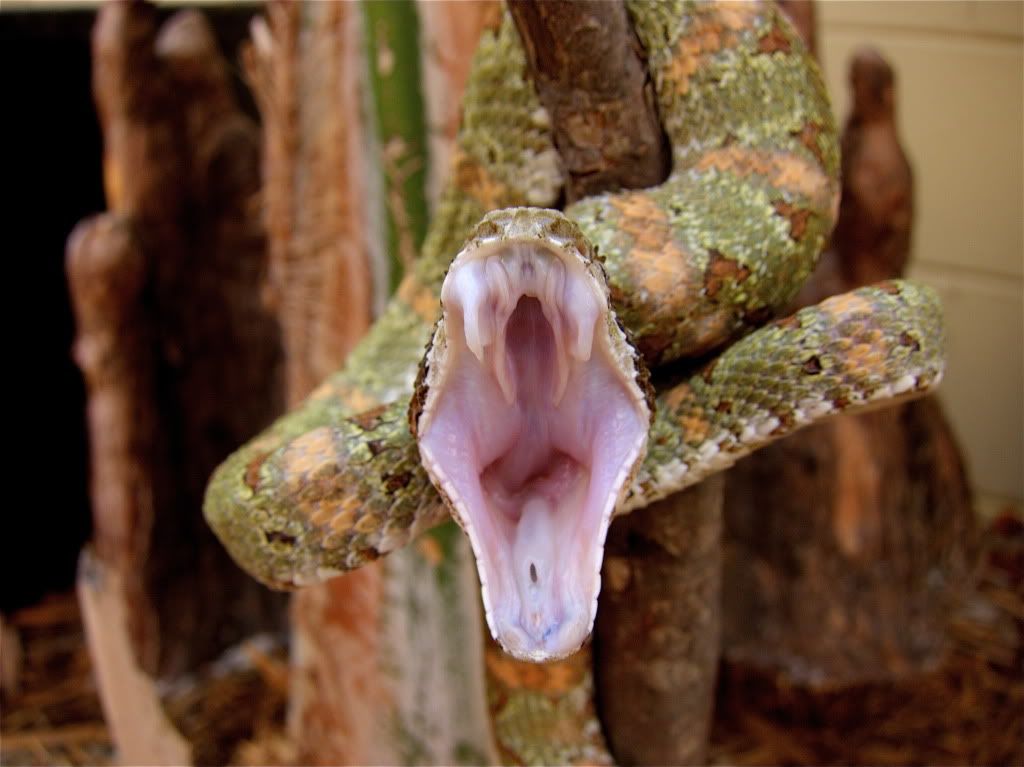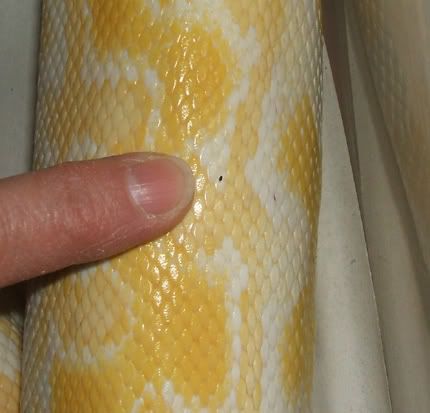Snake-Supplies
Well-Known Member
I was wondering on what I should look for in a snake to see if they are healthy...
I figured newbies (such as myself) could benefit from a post such as this.
I am no vet and am far from a snake expert, I had to do a fair bit of searching for this.
This is a rough check up/check list on snakes.
I BELIEVE nothing would beat a check up once a year from a reptile vet, until you know what you are doing comfortably. By doing so... you risk your snake catching something that it may not have got.
Observe the snake in its cage. It should be active or coiled. Look for signs of thinness, such as a pronounced backbone or asymmetry of appearance, a body section that shows swelling or collapse or an eye that is smaller than the other.
[ ]
Check for kinks in the backbone and tail, and for depressions in the rib cage. These signs indicate broken bones.
[ ]
Examine the mouth. The edges of the mouth should be flush when it is closed. If an edge sticks out because of some apparent swelling, there is a good chance that the snake has stomatitis, a bacterial infection of the gums.
 <---healthy, it should appear a pinky blue, and clean.
<---healthy, it should appear a pinky blue, and clean.
[ ]
Check the skin. It must be free of injuries, bumps, and areas of raised scales or blisters.
[ ]
Check for mites. These tiny external parasites appear like crawling little black beads on the skin, or they can be seen as a tiny, raised edge when lodged in the corners of the eyes. Tiny white flecks on the snake’s body are a good indicator of mites. These are usually mite faeces. You can check this easily by using a white tissue (having it a little moist will help the mites stick) and running it over the snake and looking for mites that way.
 <----
<----
imagine trying to find that on a black or dark snake.
[ ]
A snake with good weight that is active in its cage and regularly flicks its tongue as it moves is probably healthy. Snakes that are coiled in a shelter or a cage corner are probably resting or sleeping. (IF BUYING The only way to make sure a snake is vigorous is to ask the seller to allow you to handle it or to show you how the snake moves in its cage or in his or her hands) Healthy snakes give a clear impression of strength and vigour when in hand. Snakes that look or feel weak and limp are just that.
[ ]
Gently press up on the underside of the throat and check to see if any bubbly mucus emerges from the sides of the mouth or the nostrils; this is a sign of respiratory infection. Gaping and forced exhalations are other signs of respiratory disease.
[ ]
Look at the underside of the snake. The belly scales should be flush with the body, usually shiny, with no signs of swelling between scales. The belly should not have brown or reddish discolored areas, or scales that appear raised or ragged as if the edges were chewed. These are all signs of possible skin or systemic bacterial infections. The anal scale(s) should rest flush with the base of the tail. There should be no crusting or faecal smears around the vent (anus). A swollen or crusted vent and faecal smears are signs of parasites or bacterial infections.
[ ]
Look for signs of neurological problems. It is always a good idea to watch a snake move, either in its cage or when handled, looking for odd behaviours that indicate neurological disorders or diseases. Behaviours include raising the front part of the body then flopping over and down, or jerky side-to-side movements as if the snake can’t keep its balance.
[ ]
Allow the snake to run through your hand, your fingers lifted against the middle of the belly. With light pressure, palpate for lumps or hard masses. Recently swallowed food will feel like a soft lump around the middle of the body. In ovulating females, the mature, rounded ova feel like small marbles.
[ ]
When a shed has been completed, you should always look for a complete shed.
Look closely for the end of the tail, and eye caps.
The tail should look like a point and the eye caps are shiny scales (obviously where the eye's are)
- thanks you sara_sabian for your input on this thread.
FYI- I will be fixing this as I go.
I figured newbies (such as myself) could benefit from a post such as this.
I am no vet and am far from a snake expert, I had to do a fair bit of searching for this.
This is a rough check up/check list on snakes.
I BELIEVE nothing would beat a check up once a year from a reptile vet, until you know what you are doing comfortably. By doing so... you risk your snake catching something that it may not have got.
Observe the snake in its cage. It should be active or coiled. Look for signs of thinness, such as a pronounced backbone or asymmetry of appearance, a body section that shows swelling or collapse or an eye that is smaller than the other.
[ ]
Check for kinks in the backbone and tail, and for depressions in the rib cage. These signs indicate broken bones.
[ ]
Examine the mouth. The edges of the mouth should be flush when it is closed. If an edge sticks out because of some apparent swelling, there is a good chance that the snake has stomatitis, a bacterial infection of the gums.

[ ]
Check the skin. It must be free of injuries, bumps, and areas of raised scales or blisters.
[ ]
Check for mites. These tiny external parasites appear like crawling little black beads on the skin, or they can be seen as a tiny, raised edge when lodged in the corners of the eyes. Tiny white flecks on the snake’s body are a good indicator of mites. These are usually mite faeces. You can check this easily by using a white tissue (having it a little moist will help the mites stick) and running it over the snake and looking for mites that way.

imagine trying to find that on a black or dark snake.
[ ]
A snake with good weight that is active in its cage and regularly flicks its tongue as it moves is probably healthy. Snakes that are coiled in a shelter or a cage corner are probably resting or sleeping. (IF BUYING The only way to make sure a snake is vigorous is to ask the seller to allow you to handle it or to show you how the snake moves in its cage or in his or her hands) Healthy snakes give a clear impression of strength and vigour when in hand. Snakes that look or feel weak and limp are just that.
[ ]
Gently press up on the underside of the throat and check to see if any bubbly mucus emerges from the sides of the mouth or the nostrils; this is a sign of respiratory infection. Gaping and forced exhalations are other signs of respiratory disease.
[ ]
Look at the underside of the snake. The belly scales should be flush with the body, usually shiny, with no signs of swelling between scales. The belly should not have brown or reddish discolored areas, or scales that appear raised or ragged as if the edges were chewed. These are all signs of possible skin or systemic bacterial infections. The anal scale(s) should rest flush with the base of the tail. There should be no crusting or faecal smears around the vent (anus). A swollen or crusted vent and faecal smears are signs of parasites or bacterial infections.
[ ]
Look for signs of neurological problems. It is always a good idea to watch a snake move, either in its cage or when handled, looking for odd behaviours that indicate neurological disorders or diseases. Behaviours include raising the front part of the body then flopping over and down, or jerky side-to-side movements as if the snake can’t keep its balance.
[ ]
Allow the snake to run through your hand, your fingers lifted against the middle of the belly. With light pressure, palpate for lumps or hard masses. Recently swallowed food will feel like a soft lump around the middle of the body. In ovulating females, the mature, rounded ova feel like small marbles.
[ ]
When a shed has been completed, you should always look for a complete shed.
Look closely for the end of the tail, and eye caps.
The tail should look like a point and the eye caps are shiny scales (obviously where the eye's are)
- thanks you sara_sabian for your input on this thread.
FYI- I will be fixing this as I go.
Last edited:



